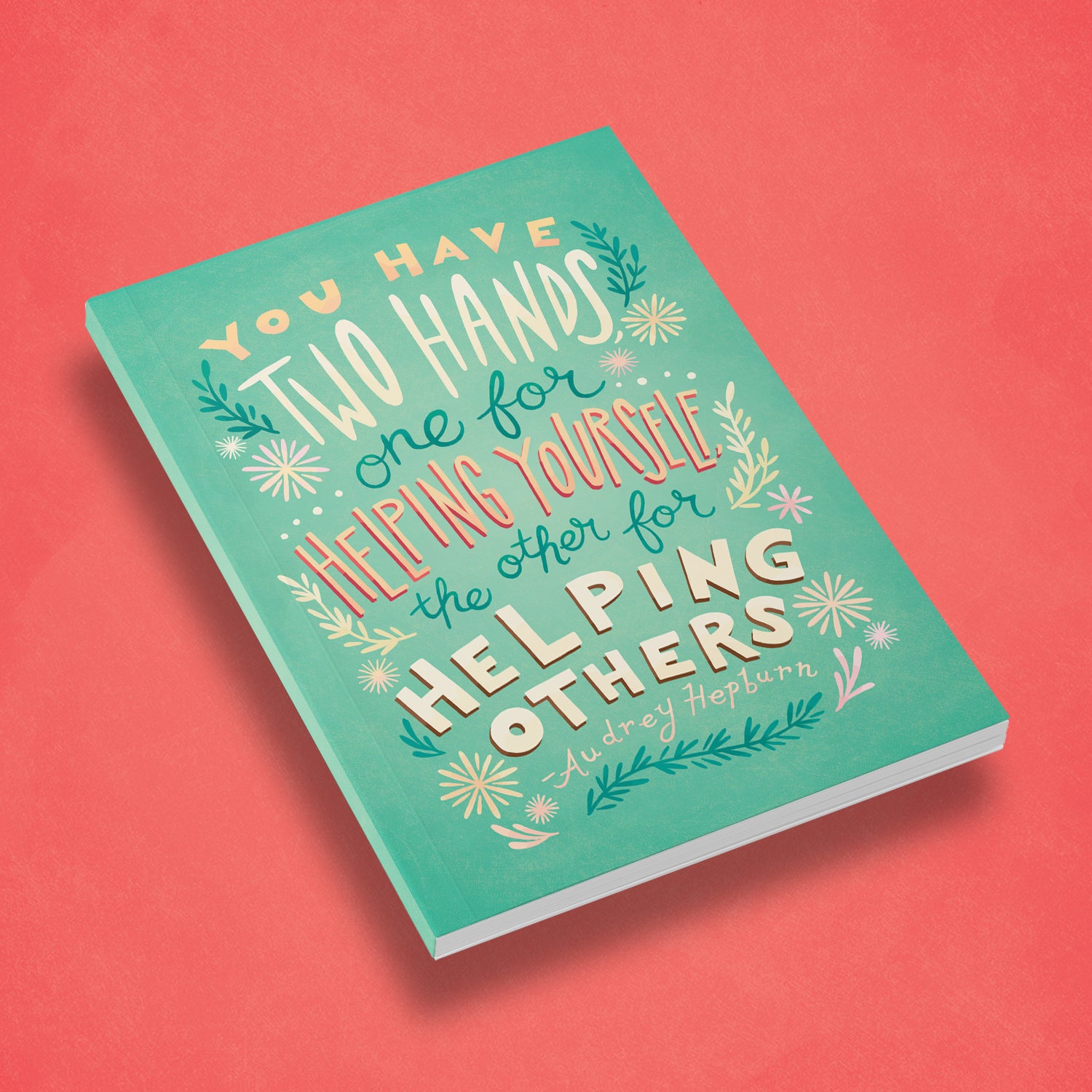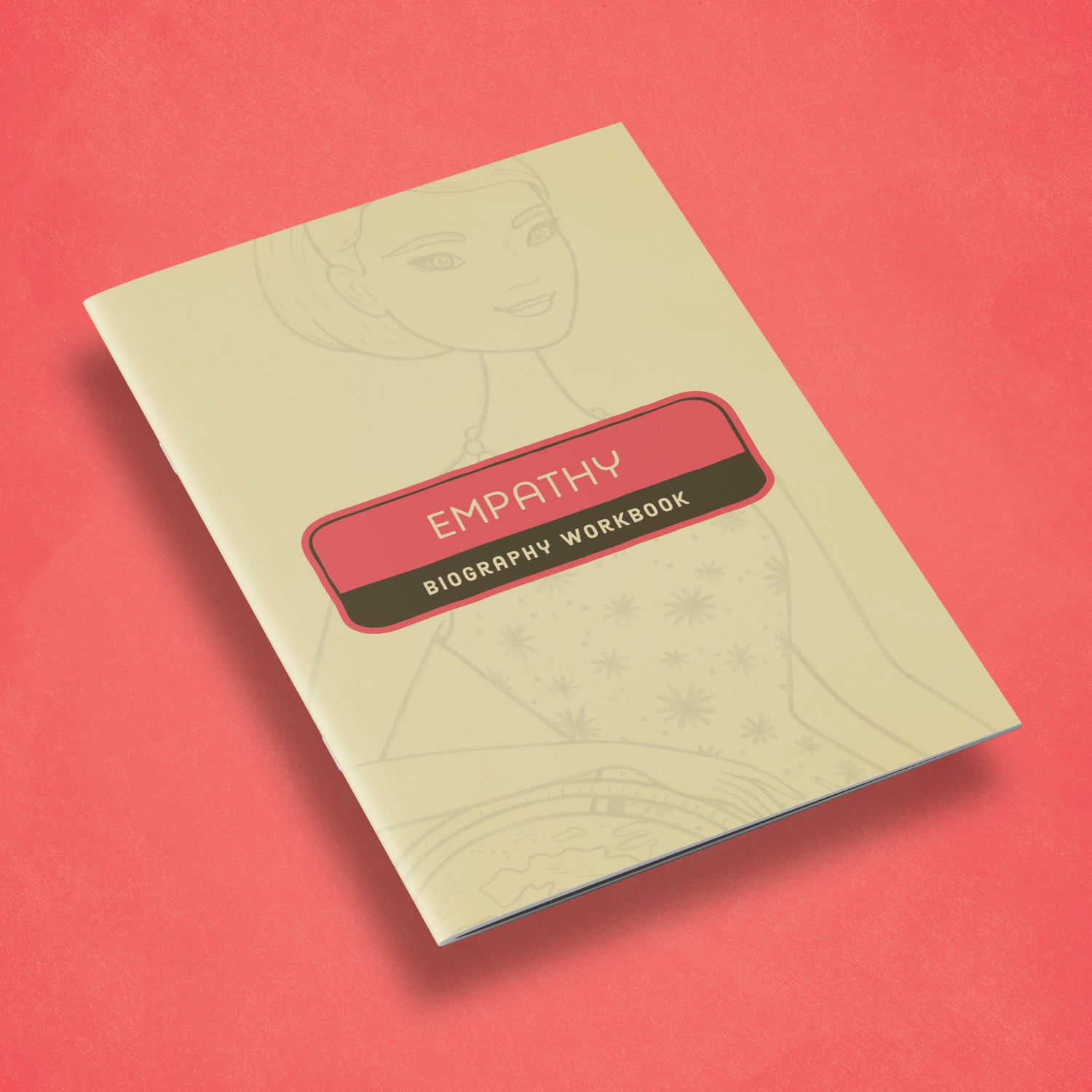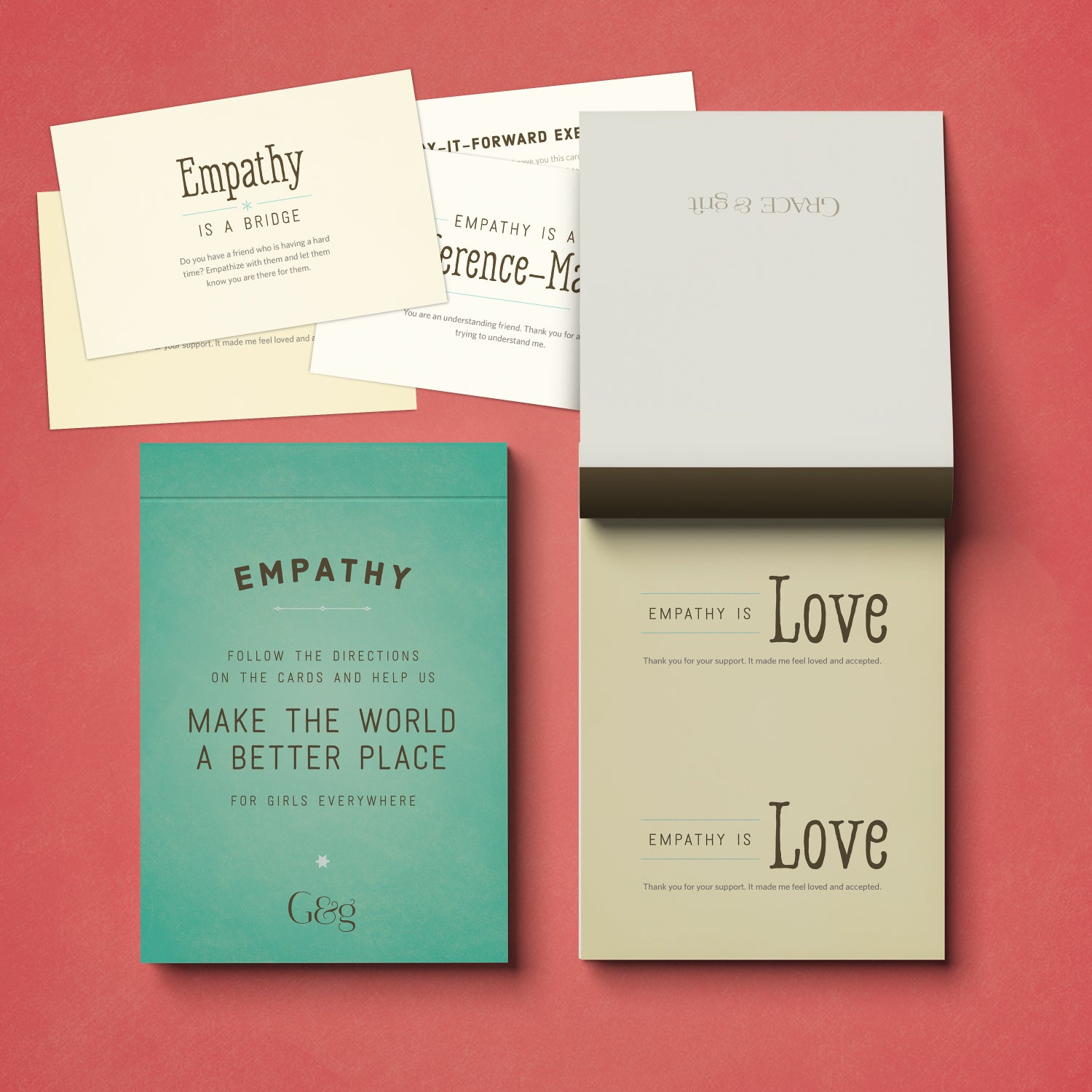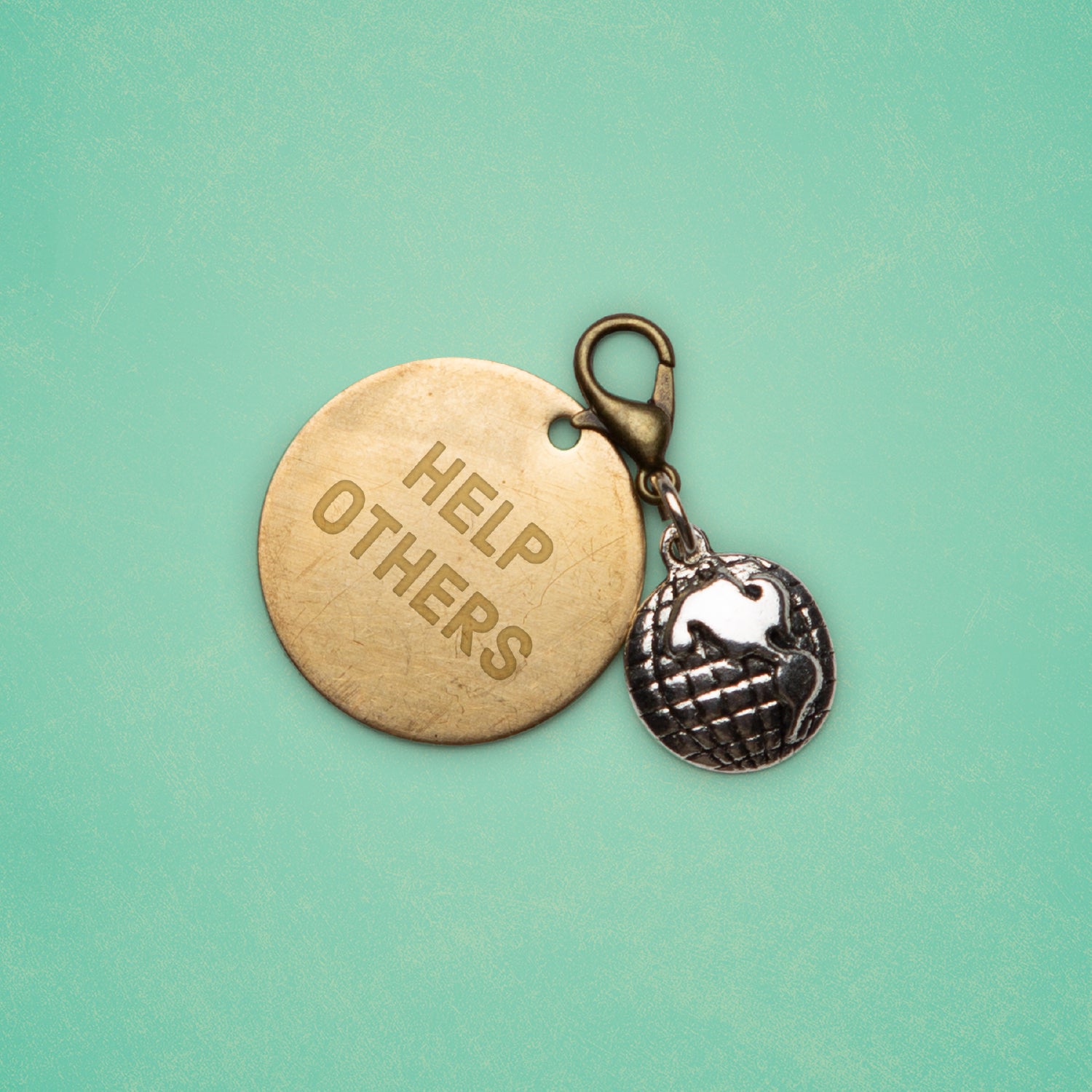Empathy is a form of compassion. It is an important tool for connection and understanding. This lesson gives a real-life example of a woman who believed in the power of empathy. It helps girls understand the importance of it and how to incorporate the character trait into their lives and relationships.
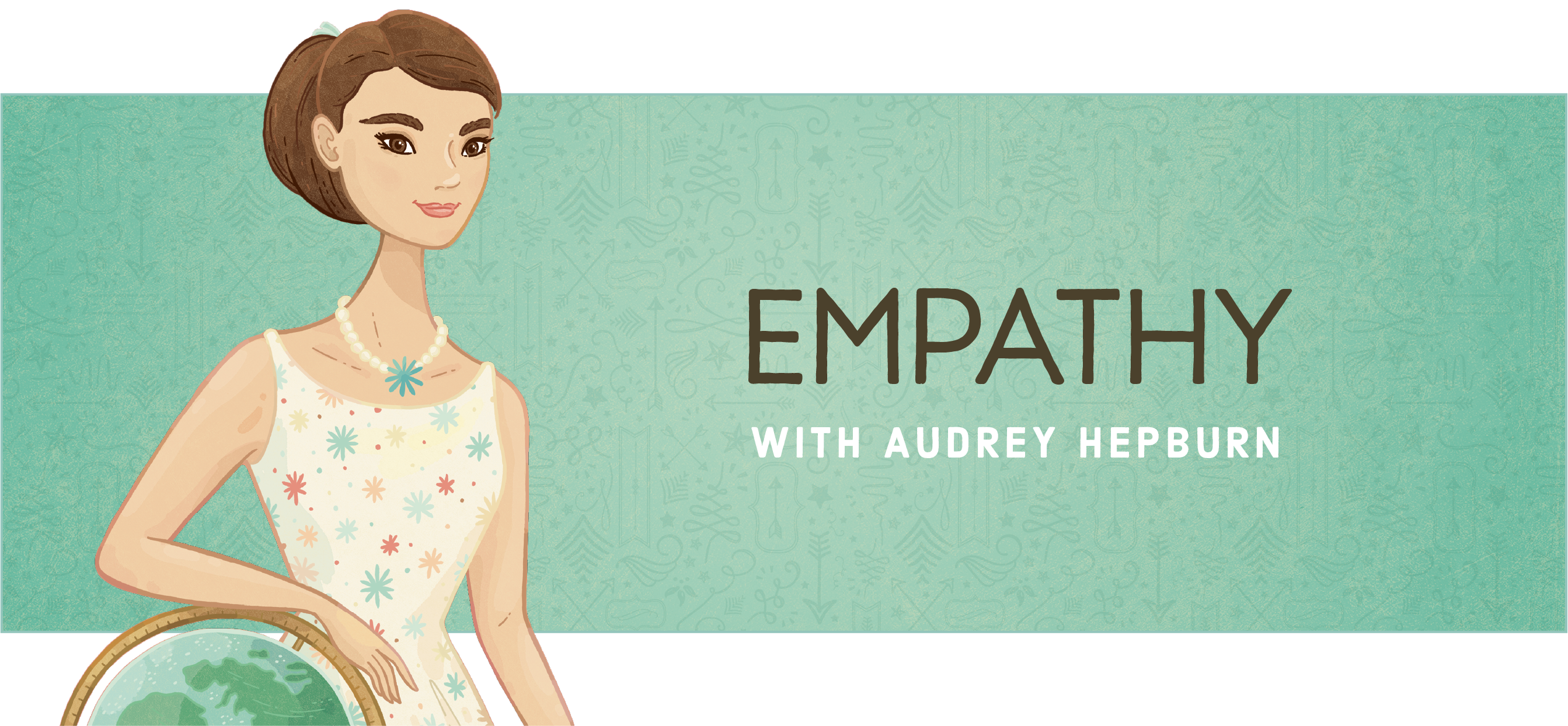
Section One
Preparatory Reading
INTRODUCTION FROM HEATHER STARK: WHY AUDREY HEPBURN?
Audrey Hepburn. The beautiful, petite, doe-eyed actor with a charming smile was poise personified. Certainly, no one who saw her portrayal of the wacky heroine in Breakfast at Tiffany’s would suspect she had trudged through a difficult childhood in war-torn Europe, suffering through malnutrition and depression. But Audrey never forgot—and her celebrity status gave her the perfect platform to shine a spotlight on third-world problems. While her cinematic credits are many, arguably, Ms. Hepburn’s empathy was her greatest gift to the world.
Even today, Audrey Hepburn still mesmerizes. Girls of her day wanted to be her. Audrey defined “fabulous” in a way not many women could, embodying the word in every way, shape and form.
While she is best known as a beauty icon who graced the movie screen with her presence, Audrey’s story takes on some grit when the wartime struggles of her childhood are revealed along with how she left her glamourous world behind in search of finding the cure for hunger. Her life story presents two life lessons for those who will follow in her footsteps: that pain can be turned into purpose and that pink can be gritty.
Audrey’s first message—the core and complete rawness of her story—is the lesson that everyone has the ability to take painful personal experiences and turn them into grace for others. Audrey took the starvation she had endured as a child and turned it into a mission to feed the hungry. The fabulous actor with a beautiful face was committed to this mission, and she got gritty and real in the process of being empathetic and serving others. What a lesson for all girls! The trials endured in childhood deliver grace in adulthood. All those hardships today’s girls struggle with overcoming can fuel their success in life. Pain can be a means to help others, a reason to extend beyond the borders of one’s soul and into the lives of others to keep them from experiencing the same hurt and suffering. This is a gentle reminder to all girls that good things can grow from hardships.
Audrey also helps girls understand that they can be strong and soft at the same time. You can be tough and like pink.
Spanning the decades, many girls and women have been drawn to Audrey. They like watching her move and listening to her speak. She had an admirable talent, and many secretly longed to be her. So, it stands to reason that a woman adored by so many would be the perfect life lesson to study and apply to a larger sisterhood.
It seems a study in contradiction for women to find that happy medium between being strong and enjoying the rights that come so easily with being a girl. It is a struggle—finding the balance between enjoying makeup, fancy clothes, endlessly fun shoes, big sunglasses and even bigger hats while still satisfying the need to appear strong, independent and uncomplicated.
For today’s mothers, the goal is raising strong daughters who understand the difference between superficial and deep concerns. Today’s girls are struggling to answer questions like: “Can I be a tough athlete, get ‘As’ in school, work with my hands, enjoy sweating outdoors and wear makeup? Does wearing makeup and liking the color pink make me appear too ‘girly’ to be considered a strong woman?” While some girls already may understand the importance of serving others, they still may wrestle with the “here and now” questions: “Can I be strong and girly? Do I have to choose one over the other?” Audrey says, “No.”
Be everything and anything and do it all at once. Audrey loved a side of pink with her grit and lipstick with her service. She combined the best of all things woman with the best of all things empathy and grit. It isn’t always this or that; girls can choose this and that. Grit can be soft and feminine, and grace can be sweaty and tough. Audrey gives girls permission to embrace the appreciation for the color pink and the gritty lesson of using their pain to serve others with graceful femininity.
“I believe in manicures. I believe in overdressing. I believe in primping at leisure and wearing lipstick. I believe in pink. I believe happy girls are the prettiest girls. I believe that tomorrow is another day, and ... I believe in miracles.” —Audrey Hepburn
THE JOURNEY OF AUDREY HEPBURN’S LIFE
Almost every year of Audrey’s life was spent doing something for herself or others. Though her early years were filled with tragedy, the time from young adulthood to her death was full of glamour and empathy. She was an incredible humanitarian.
1929
Audrey Kathleen van Heemstra Ruston was born in Brussels, Belgium.
1940
German forces invaded Holland, and all the family’s property was confiscated.
1944
After nine years of ballet, Audrey began giving “under-the-table” dance lessons to earn money for herself and her mother.
1949
After being noticed as a chorus girl in High Button Shoes, Audrey was cast in additional roles and eventually landed a role in Gigi as well as in the movie Roman Holiday.
1954
Audrey wins the Best Actress Oscar for her work in Roman Holiday and later marries Mel Ferrer, an actor and film director.
1960
After years of being cast in several movies, Audrey began work on one of her most iconic roles in Breakfast at Tiffany's.
1971
Audrey got involved in a UNICEF television special hosted by Julie Andrews.
1988
Audrey was named UNICEF’s Goodwill Ambassador, and this post fueled her passion for the rest of her life. She would spend much of her time traveling with UNICEF, educating the world on hunger and poverty and lobbying Congress for aid to underdeveloped countries.
1993
On Jan. 20, Audrey died at home in her sleep. Two months later, she posthumously received the Jean Hersholt Humanitarian Award.
Audrey’s life was a life fully lived, filled with adventure, excitement, heartache and service. It is hard to believe that one person went through so many events in one lifetime. Audrey was a fascinating woman whose appearance on film was one of utter grace—but, behind the scenes, she led a life full of grit.
CHARACTER TRAIT: EMPATHY
Audrey Hepburn’s empathy was the fabulous result of grace and grit.
To be empathetic is to have the ability to reach out to others and give wholly and completely. It requires less ego and more wisdom. Less sympathy and more compassion. Less hard line, more vulnerability. Less judgment, more grace. Less in the way of excuses, more grit.
Because the classrooms of today are filled with the leaders of tomorrow, empathy is a lesson that needs to be learned now—to match the exponentially growing needs not only in nearby communities, but also those that exist worldwide. It can be taught and demonstrated in a variety of ways, and not all of them involve volunteering at food pantries and working with vulnerable communities. Empathy is also needed in leadership roles or team participation—whether it be a sports team or a group assignment in school. “Less of me and more of you” is required for team projects. Empathy requires emotional maturity and higher-level thinking skills.
As students, think about all the opportunities available in school: student council, academic clubs, athletics—these all require a level of empathy. Every time a girl athlete steps onto a basketball court, she leaves her “self” behind and becomes part of a team. Every time a girl takes the position of student-council president, she leaves her “self” behind and thinks of the student body. Every time classmates are given a group assignment, there is less ego and more “us.”
Teaching these skill sets should begin at a young age. It can start with having toddlers donate items to the Salvation Army, taking children shopping to purchase gifts for Christmas Angels programs, having them take part in preparing food for ailing family and friends, and of course, volunteering at a food bank or helping disadvantaged youth. Sometimes, being able to see how others live—and what they live without—is what it takes to open one’s eyes and develop a desire to make things better for “the team.” This same perspective can be applied during group assignments at school, mission trips with the church, leading others through extracurricular activities and even babysitting jobs.
Connection with other people is essential to developing meaningful relationships, and true connection stems from empathy. Empathy requires one’s eyes to be wide open and one’s compassion to be turned on.
However, it also requires understanding the limits of one’s body and soul and knowing when to say “yes” and when to say “no.” Too often, girls are guilted into being told they should care about everything, which is an unfair expectation. Girls must be so confident in knowing themselves that they say “no” to what they cannot take on without making excuses to make others feel better. They should be able to utter a resounding “no” and have it treated as if that two-letter word was a complete sentence.
Saying “no” is yet another required skill set. Saying “yes” to all things in the universe depletes a person’s resources until there is nothing left to give. So, if everyone takes on a bit of the responsibility of compassion, everyone grows individually while also propelling the growth of humankind—and the result can be something pretty fabulous.
LESSON CONTENTS
Below are descriptions of each item we offer as part of the Empathy Theme. Depending on your purchase, some of these may not be applicable.
- Illustrated Portrait
- Our portrait gives life to each of our sets. Audrey's illustration has her standing with her arm resting on a globe. After nearly starving during WWII, Audrey was empathetic to others who didn't have enough food. She used her influence to help those in need. The picture suggests she is looking beyond everyone into the future and imagining a time when no child ever is without food.
- Activity Booklet
- The Activity Booklet highlights the themes in Audrey Hepburn's life. It gives an overview of her journey into empathy and the legacy she left behind. The booklet includes six thought-provoking activities that guide the readers to apply the lessons of Audrey's life to their own. Girls will understand what empathy looks, sounds and feels like. More importantly, they will understand how to be their own best advocate.
- Biography
- While the Activity Booklet highlights Audrey's story, the Biography gives a more in-depth telling of her life. The reader will learn how Audrey developed her deep empathy for others. It tells about the dangers she faced as a child during Hitler's invasion of Holland, her rise to stardom and how she became an ambassador for UNICEF. The Biography contains personal stories and quotes that reinforce Audrey's empathy.
- Biography Workbook
- The Biography Workbook allows the reader to dive into the lessons Audrey Hepburn's legacy teaches and apply them to their life. We took the same thought-provoking activities from the Activity Booklet and made them into a companion guide for the Biography. After completing the activities, girls will understand what empathy looks, sounds and feels like. More importantly, they will understand how to be empathetic to themselves.
- Timeline Poster
- The Timeline Poster is a quick introduction to the life of Audrey Hepburn. One look at it, and the reader can easily spot the milestones in Audrey's life, how she navigated through her childhood and how she rose to fame, only to give it up for a deeper purpose. From birth to death, girls can trace Audrey's path and understand how her accomplishments changed the course of history.
- Play-It-Forward Cards
- Using the Play-It-Forward Cards allows your girls to generalize the lessons they have learned about the empathetic Audrey Hepburn. By following the directions on the cards, they will acknowledge those instances where they see Audrey's spirit in themselves and others in their community. The Play-It-Forward Cards encourage girls to support one another by encouraging and recognizing empathy in others.
- Accessory
- The Accessory is a gift that reminds girls of Audrey Hepburn's empathy. Usually, the accessory accompanying each historical figure is specially designed and handmade just for Grace & Grit by a locally owned company. For Audrey, however, the decision was made to purchase bracelets handmade by artisans in developing countries. There always is good work to be done, just as there are beautiful ways to help others. The purchase of these bracelets helps women support their families and communities.
- Charm
- The charm is a reminder of Audrey Hepburn's legacy. Audrey's charm is a disk stamped with the words "Help Others" paired with a globe. When paired together, Audrey and the charm remind girls that they can be sophisticated, fabulous and humble enough to serve others. Empathy will make the world a better place.



